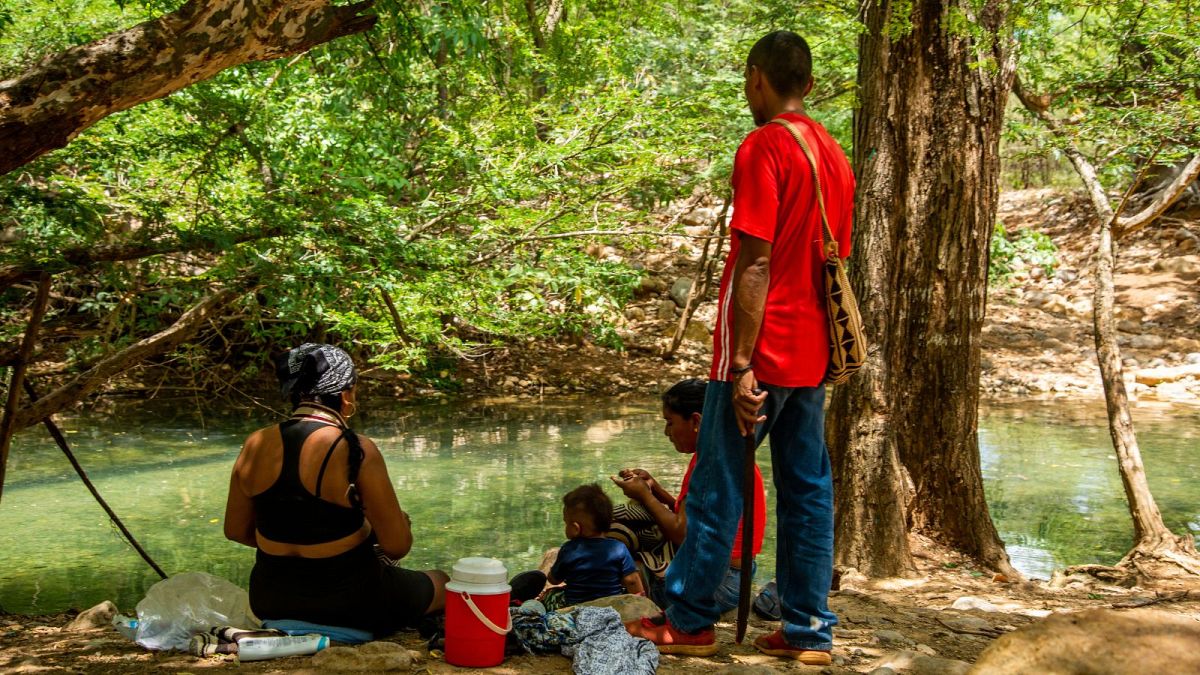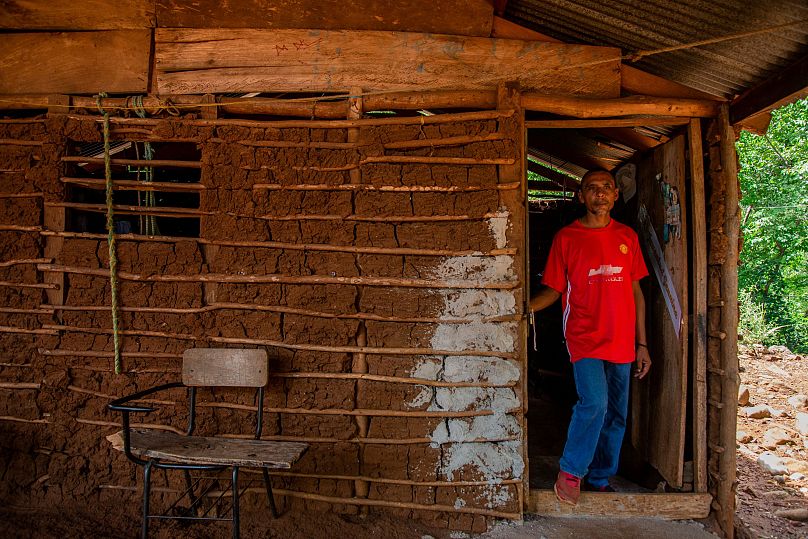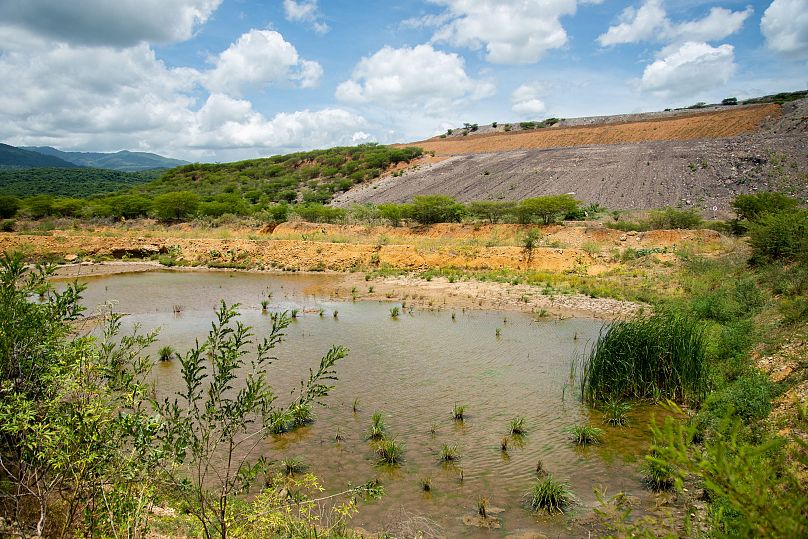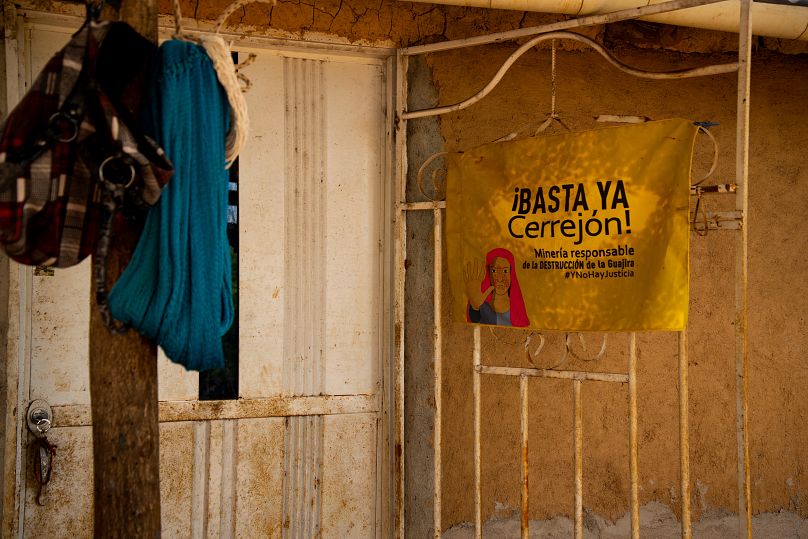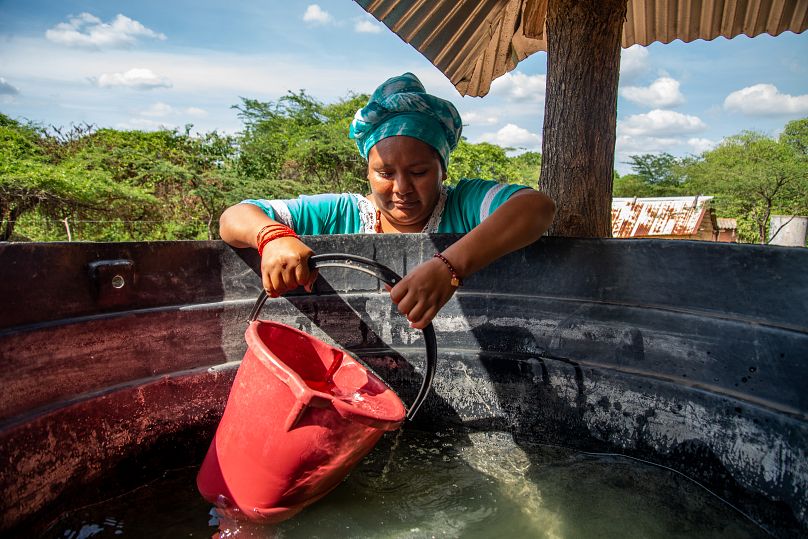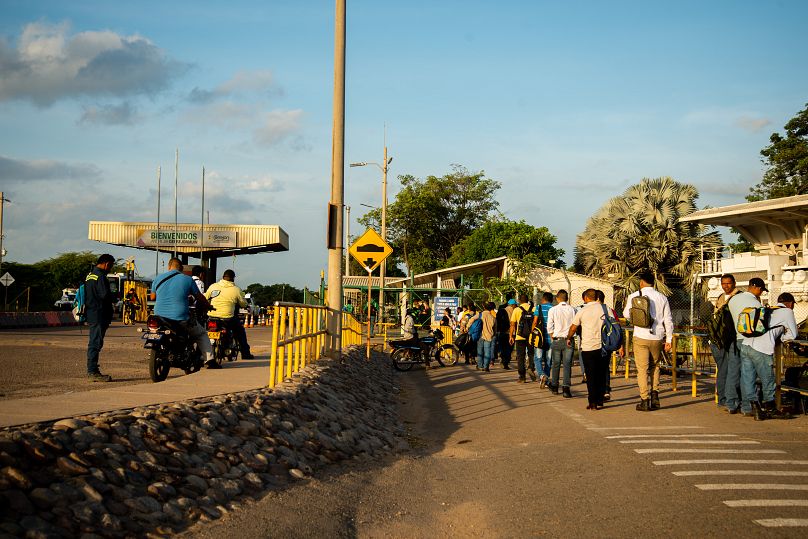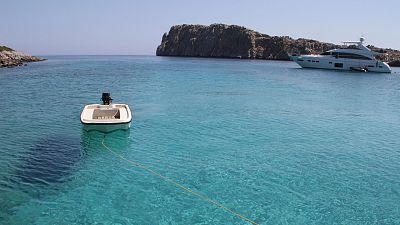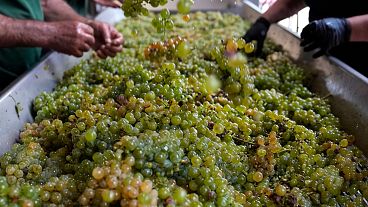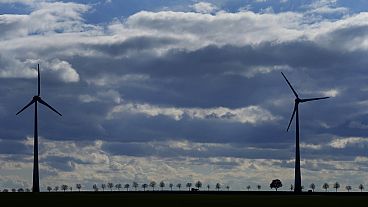Indigenous communities living by the Swiss-owned Cerrejón mine in Colombia describe their suffering over the past 40 years.
"Where there is water, there is life. Without it, where are we going to live?" asks Leobardo Sierra, a 48-year-old Wayuu Indigenous leader from Colombia. He lives at the foot of Cerrejón in La Guajira, one of the world's largest open-pit coal mines.
Sierra built his house in line with traditional Bahareque techniques, using sticks and mud. At his wood-burning kitchen stove, he boils water to make his daily tinto, plain coffee with water. He leads a humble lifestyle, far removed from consumerism, which comforts him. "I don't need millions of euros to live well," he says.
The Cerrejón mine hit the region like a black hole in 1984, causing damage to the water supply, health, spirituality and culture of the communities from La Guajira.
Pregnant women fear that their children will be born sick. Bed sheets left to dry outside turn black from the mine particles. And speaking out against the mine comes with retaliation, threats and forced evacuations.
Sierra grew up without the mine, and his childhood memories are vivid. "Before, we used to go fishing, hunting, collecting and gathering medicinal plants. Now it's almost impossible because they send people to watch over us. If the mine had never come, things would be better off," he says.
A few metres from his house is one of the few water sources that the community managed to save: the Bruno Creek.
In 2016, the Cerrejón mining company was granted permission to divert the creek three kilometres from its natural course, but the local communities challenged this in court.
The Colombian Constitutional Court ruled in their favour, stating that there was uncertainty regarding the social and environmental impacts of the diversion. But six years on, the monitoring body on this ruling found that Cerrejón had not complied with it.
Locals say the coal arrives in Europe ‘tainted with blood’
Where Indigenous and Afro-descendant communities saw their home and sacred trees, mining giants saw a million-dollar opportunity to extract tonnes of coal.
Cerrejón exports most of its coal abroad and is owned by the Swiss multinational Glencore - a source of grievance among the Guajiros who feel they live in poverty while others prosper.
According to Cerrejón's 2020 annual report, 43 per cent of the coal was exported to the Mediterranean region and 15 per cent to other countries in non-Mediterranean Europe.
Cerrejón is the second most profitable mining company in Colombia. In 2022, its revenues increased by 149 per cent. But these corporate success figures contrast sharply with the living conditions of the population.
"They say we are rich because there is a company that generates a lot of profit, but in reality, the people are poor. We used to be the rich ones," says Sierra.
"It's not fair that we have to die intoxicated and forced to uproot with sadness and pain while a multinational takes the money to another country," says Afro leader Samuel Arregocés. He claims that the coal arrives in Europe "tainted with blood."
The data confirms the devastation in this region without drinking water, from which 25 Indigenous communities have been displaced. La Guajira has the highest rates of child malnutrition in the country, and more than 40 per cent of the population lives in conditions of extreme poverty.
Sierra claims that when the mine arrived, they deceived the people by promising them a better life and imposing an idea of progress that he rejects.
"I learned that progress is something very different from what we have today. Progress isn’t about destroying the environment; it's about protecting life. This is a setback because without water, we die," he says.
‘We don't know where our family's bones are’
Arregocés belongs to the Afro-descendant community of Tabaco, displaced in 2001 to make way for the mega mining project. "Some of us were kicked out [after being deceived], and others by force and threats," he alleges.
In 2002, a ruling by the Supreme Court of Justice of Colombia ordered the Tabaco Community to be rebuilt in a suitable location, something that to this day has not been fulfilled. "My grandparents passed away while waiting," he adds.
Arregocés still gets emotional when remembering what his life was like prior to the mine. His grandfather raised the animals they would eat, and they had access to clean drinking water almost all day thanks to a water supply system they built themselves.
"We went from having those amenities to losing them and right into unemployment and cultural displacement. Our youth didn't even get to know our community," he laments.
There has also been a spiritual dispossession, he says, with the desecration of his communities’ cemeteries. "We don't know where our family's bones are. It has caused us emotional trauma; I have stopped being a happy person," he says.
Being a social leader is not an easy task in the country with the highest number of environmental activists murdered on the planet. That's why Arregocés doesn't leave home without his bulletproof vest. "For a while, there were people watching me 24/7, and we were afraid they would kidnap or harm my two-year-old nephew," the leader says.
Despite this, there is a ray of hope. This Afro authority finds comfort in the broad social support it receives, such as through a change.org campaign, supported by more than 222,000 people from 166 countries, demanding the return of the Bruno Creek to its natural course.
"This shows that it's not just us; there is an organised citizenry in Colombia and around the world fighting to defend water," he says.
The dream of the Wayuu women
Mónica Lopez lives with her partner, Misael Socarrá, in the 4 de noviembre Reservation in La Guajira. For her, understanding the role of women in this process is essential. "Our essence as Indigenous peoples is our spirituality, and us, women, are the ones who master it," she says.
The mayoras, usually the grandmothers of the family, are the spiritual guides for the Wayuu people. According to their worldview, they can avoid future misfortunes through dreams. "When they dream that something bad is going to happen to someone, we perform a ritual with clothes in the river to prevent it," she explains.
But this changed forever when more than 150 kilometres of railroad tracks were built across Wayuu territory to transport millions of tonnes of coal each day. "The noise of the train has robbed our mayoras of their sleep. That connection they had with their spiritual journeys no longer exists," Lopez says.
Wayuu women transmit spirituality to their children. However, they are often forced to migrate to cities in search of support and education for them, which can lead to the loss of their cultural essence. "One maintains one's culture through practices. No matter how Wayuu you are, if you don't practice it, you forget it," she emphasises.
Likewise, Lopez explains that having children brings a lot of uncertainty. "When you're pregnant, it's not the same because you're afraid that the baby will be born sick due to the mine," she says.
Her daughter's face is covered in spots and rashes, and no matter how many times they consult specialists, she hasn't recovered. "In the past, these kids didn't have these illnesses, but nowadays they do. Today, children constantly suffer from the flu because the air we breathe is contaminated," she says.
An expert from the UN called for an end to certain activities at Cerrejón, highlighting the health impacts on the population, which have been the subject of numerous studies.
‘The death shift’: Mine workers are suffering too
The mine workers are also fighting against alleged abuses by Cerrejón. Igor Díaz, president of the Sintracarbón union, recalls episodes of labour repression and claims that their jobs are constantly at risk.
"They fired 226 workers, most of whom were affiliated with the union, after a 92-day strike demanding an end to what we call ‘the death shift’, which forced us to work nearly 60 hours more per week," he says. According to the union, this meant a greater exposure to lethal workplace accidents due to mental and physical exhaustion.
Their main battle is for recognition of the diseases they are susceptible to. "Working in the mine can lead to musculoskeletal and respiratory diseases. Our struggle is to demand that Colombia's social security system recognises these occupational diseases and proves that they result from mining exploitation," he stresses.
The union leader sees the struggles of Indigenous people, Afro-descendants and farmers in the region as inseparable from the struggles of the workers. "We raise our voices when the company turns a deaf ear to the demands of the communities because that's where our families are," he states.
Will the EU’s new due diligence law help?
While the struggles in northern Colombia continue, the European Union is negotiating a due diligence law to hold companies accountable for their impacts on human rights and the environment throughout their supply chains.
Yukpa Indigenous leader Juan Pablo Gutierrez, exiled in Paris after facing murder attempts for opposing the Cerrejón mine, criticises the law as a way to keep colonialism going.
"It's a distraction measure because it maintains the logic of exploiting Mother Earth and doesn't question Europe's unrestrained consumption model," he says.
More than 8,000 kilometres from Brussels, Leobardo watches the black mountains of the mine with unease but never loses hope.
"My ancestors fought for my future, now I fight for those who will come. This place is no longer mine but belongs to those who come after us; that's what my grandparents told me, and it's what keeps us alive," he concludes.
What does Cerrejón say?
In response to a request for comment concerning the impact of its activities on Indigenous and Afro communities, Cerrejón said it “deeply regrets the humanitarian crisis in La Guajira, which is part of a complex context, where the efforts of local and national governments have been insufficient to address the structural situation.
“Cerrejón rejects accusations of connection between this dramatic situation and the company.
“On the contrary, Cerrejón has strengthened its social investment, both mandatory and voluntary, to achieve greater scope and impact on dispersed communities in a territory with challenging climatic and geographic conditions.”
